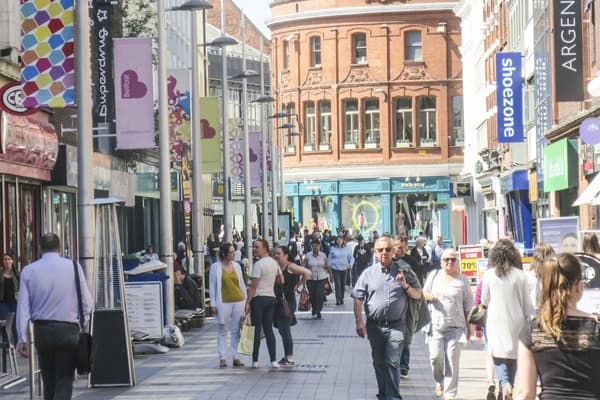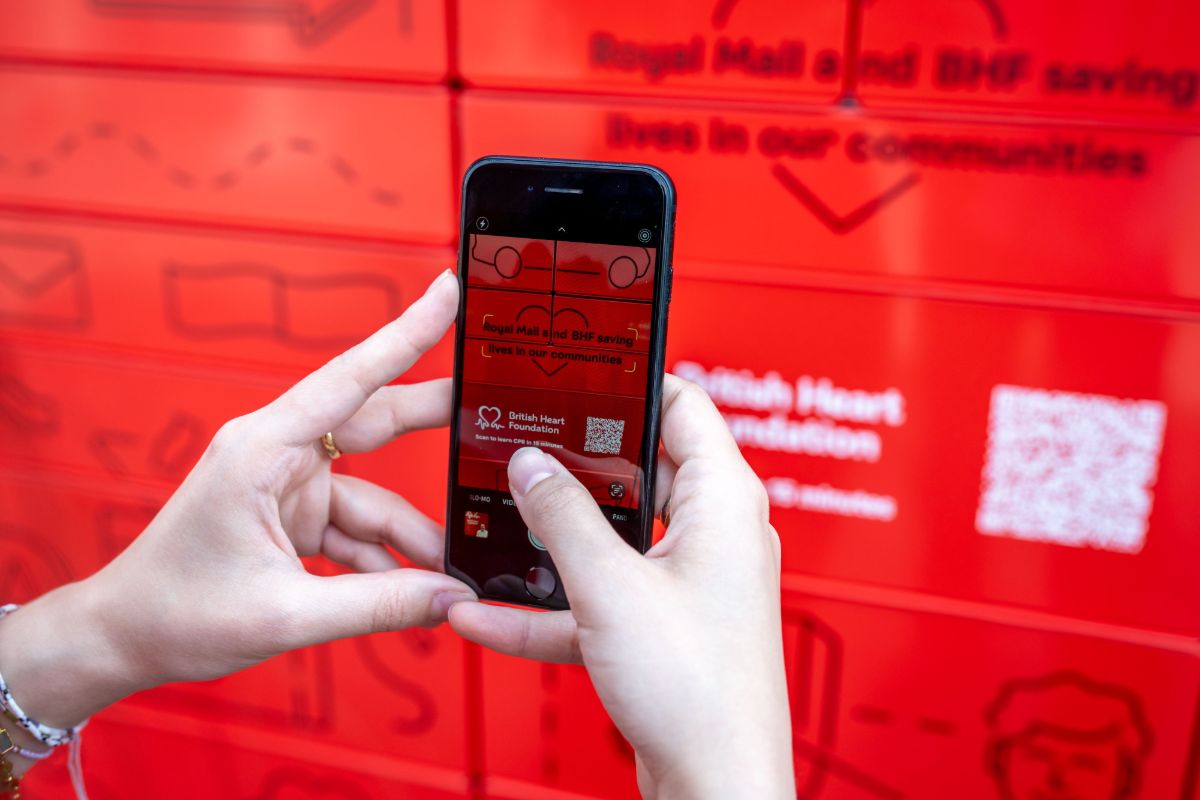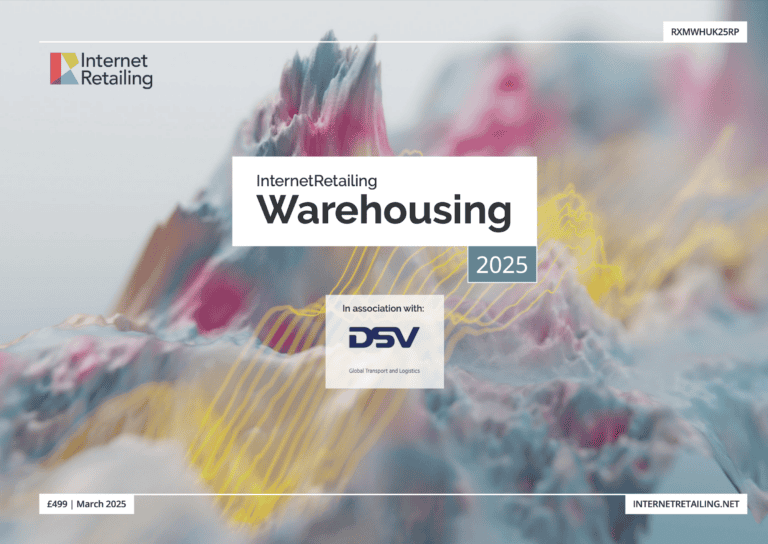Online spending continued to fall in February 2022 – one year on from the peak of lockdown online spending, the latest official figures suggest. Ecommerce sales fell last month compared to both last year (-18.1%) and the previous month (-0.7%), and as a proportion of sales (27.8%), as shoppers continued to return in-store, according to the ONS Retail Sales report for February 2022.
Across all channels, shoppers spent slightly more (0.3%) than they did in January – but bought 0.7% fewer goods. Spending was up by 11.1% compared to February 2021, and 9.6% ahead of pre-pandemic February 2020.
The figures reflects the extent to which shoppers have now moved away from lockdown spending patterns over the last year –although they still spend more online than they did before Covid-19. The picture is complicated by inflation and the cost of living crisis, since the figures suggest that even where shoppers spend more, they buy fewer goods. Storms hitting the UK in February are also likely to have affected retail spending. Storm Eunice, named on February 14, fell in the middle of a week of stormy weather in the UK.
How shoppers bought online
Ecommerce made up 27.8% of UK retail sales in February 2022, as the proportion of sales taking place online continued its long decline since February 2021, when 37.7% of sales were online in lockdown.
That trend is reflected in the fact that shoppers spent less online in every category than they did a year ago. At the same time, the only category in which they spent more than they did in January this year was clothing, footwear and textiles. However, online sales are still well above the 20% of sales that were online in pre-pandemic February 2020. This figure is higher than previously quoted because the ONS says it has improved the way it estimates both current and historical online sales.
Across all categories, ecommerce spending fell by 18.1% compared to the same time last year, and by 0.7% compared to January 2022.
Online spending on food was 24.1% down on last year and 2.6% down on January; overall 8.9% of UK retail sales in the category were online.
Just over a fifth (21.4%) of non-food sales were online, with sales almost a third (-32%) down on last year, and 0.9% down on January.
A fifth (20.1%) of household goods sales were online – down by 45.6% on last year and by 2.3% on the previous month.
At department stores, 22.2% of sales were online, as ecommerce spending fell by 35.3% on last year, and by 0.5% on January.
Almost a quarter (24.5%) of clothing, footwear and textile sales were online, with spending 21.7% down on last year, but 0.7% more than the previous month.
Sales at ‘other’ stores, from electrical and technology retailers through to booksellers, jewellers and toyshops, were 19.2% online, with sales 27.9% down on last year and 1.8% down on January.
Sales at non-store retailers – where sales were 93.9% online and mostly include pureplays – fell by more than a quarter (-27.9%) on last year and fell by 4.8% on the previous month but were still a third (+33.2%) higher than pre-coronavirus February 2020 levels.
How shoppers bought across channels
Across all channels, shoppers spent slightly (+0.3%) more than they did in January 2022 to buy 0.7% fewer goods, excluding automotive fuel. And they spent 11.1% more than they did last February to buy 4.6% more goods, with the difference reflecting the effect of inflation. However, retail sales remain 3.7% above pre-pandemic February 2020 levels.
Shoppers spent 0.2% less on food, compared to the previous month, as alcohol and tobacco sales fell particularly quickly. This, says the ONS, could be linked to higher spending in pubs and restaurants as confidence returns. Food shops sold 0.1% less, in volume, than in pre-pandemic February 2020.
Shoppers also spent 0.6% more at non-food shops compared to the previous month, as sales of clothing (+13.2%) and at department stores (+1.3%) rose, as shoppers returned to the office and went out more.
What the commentators say
Helen Dickinson, chief executive of the British Retail Consortium, says: “Sales growth fell slightly in February as rising concerns about inflation appeared to dampen consumer appetites. Stronger sales results could be seen for clothing and footwear, while food spend remained down on last year for the second consecutive month. Online sales fell as compared to last year, when the country was in its third lockdown, as more people returned to the shops. Nonetheless, as competition for limited consumer spend increases, retailers must continue to invest in their physical and digital offerings.
“Consumers face a rocky road ahead, with rises in the energy price cap and NI contributions both coming next week. Meanwhile confidence has been knocked by the continued rise in inflation, as well as the uncertainty created by the situation in Ukraine. While the Chancellor’s Spring Statement offered some relief for consumers, rising inflation and next week’s rise in the energy price cap mean that real discretionary incomes are likely to fall in the coming months, as the cost of living soars.”
Jacqui Baker, partner and head of retail at RSM UK, says: “Despite restrictions easing and more commuters returning to the office, multiple February storms battered the UK and dampened consumer spending as retail sales fell by 0.3%. Despite the overall fall, clothing sales were up by 13.2%.
“The February data shows a snapshot in time, and the geopolitical and global economic landscape has now changed – accelerating the cost of living crisis through soaring energy prices, increased interest rates and further pressure on commodities adding to price inflation. As household budgets feel the squeeze, the competition for spend has also increased.”
Baker says retailers are facing headwinds including increased staff costs and the end of VAT and rates relief at a time when shoppers will be tightening their belts.
She adds: “Set against this backdrop, it’s no surprise that retailers are innovating. Brands are looking to diversify and branch out into market towns and coastal cities, as well as key city centre locations – adapting to new ways of working post-Covid and making the most of increased footfall in these areas to support their post-pandemic recovery.”
Dave Bruno, director of retail market insights at retail technology company Aptos, says: “We must stay vigilant. Despite somewhat solid fundamentals, consumers have so many things to contend with right now – war, inflation, fuel prices, to name just a few. These complicated challenges can put a strain on consumer confidence and, I suspect, future retail numbers, as price-conscious customers feel the pinch.
“As we look ahead, retailers should prepare for the months ahead by focusing on the one thing they can control: the customer experience. Retailers who empower shoppers with convenience, flexibility, transparency and timely communications throughout every journey will earn the confidence of their customers and thereby encourage more purchases, more often.”










